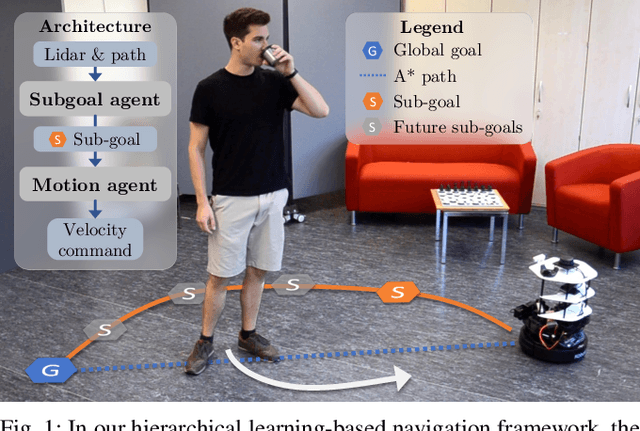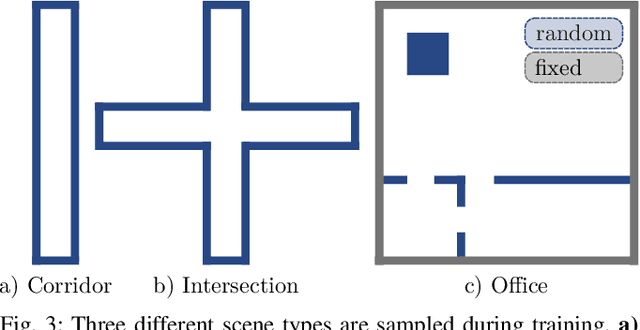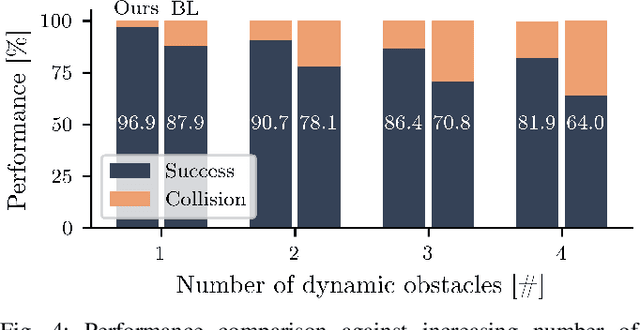Xiangyu Zeng
VideoChat-R1: Enhancing Spatio-Temporal Perception via Reinforcement Fine-Tuning
Apr 10, 2025Abstract:Recent advancements in reinforcement learning have significantly advanced the reasoning capabilities of multimodal large language models (MLLMs). While approaches such as Group Relative Policy Optimization (GRPO) and rule-based reward mechanisms demonstrate promise in text and image domains, their application to video understanding remains limited. This paper presents a systematic exploration of Reinforcement Fine-Tuning (RFT) with GRPO for video MLLMs, aiming to enhance spatio-temporal perception while maintaining general capabilities. Our experiments reveal that RFT is highly data-efficient for task-specific improvements. Through multi-task RFT on spatio-temporal perception objectives with limited samples, we develop VideoChat-R1, a powerful video MLLM that achieves state-of-the-art performance on spatio-temporal perception tasks without sacrificing chat ability, while exhibiting emerging spatio-temporal reasoning abilities. Compared to Qwen2.5-VL-7B, VideoChat-R1 boosts performance several-fold in tasks like temporal grounding (+31.8) and object tracking (+31.2). Additionally, it significantly improves on general QA benchmarks such as VideoMME (+0.9), MVBench (+1.0), and Perception Test (+0.9). Our findings underscore the potential of RFT for specialized task enhancement of Video MLLMs. We hope our work offers valuable insights for future RL research in video MLLMs.
Make Your Training Flexible: Towards Deployment-Efficient Video Models
Mar 18, 2025Abstract:Popular video training methods mainly operate on a fixed number of tokens sampled from a predetermined spatiotemporal grid, resulting in sub-optimal accuracy-computation trade-offs due to inherent video redundancy. They also lack adaptability to varying computational budgets for downstream tasks, hindering applications of the most competitive model in real-world scenes. We thus propose a new test setting, Token Optimization, for maximized input information across budgets, which optimizes the size-limited set of input tokens through token selection from more suitably sampled videos. To this end, we propose a novel augmentation tool termed Flux. By making the sampling grid flexible and leveraging token selection, it is easily adopted in most popular video training frameworks, boosting model robustness with nearly no additional cost. We integrate Flux in large-scale video pre-training, and the resulting FluxViT establishes new state-of-the-art results across extensive tasks at standard costs. Notably, with 1/4 tokens only, it can still match the performance of previous state-of-the-art models with Token Optimization, yielding nearly 90\% savings. All models and data are available at https://github.com/OpenGVLab/FluxViT.
InternVideo2.5: Empowering Video MLLMs with Long and Rich Context Modeling
Jan 21, 2025Abstract:This paper aims to improve the performance of video multimodal large language models (MLLM) via long and rich context (LRC) modeling. As a result, we develop a new version of InternVideo2.5 with a focus on enhancing the original MLLMs' ability to perceive fine-grained details and capture long-form temporal structure in videos. Specifically, our approach incorporates dense vision task annotations into MLLMs using direct preference optimization and develops compact spatiotemporal representations through adaptive hierarchical token compression. Experimental results demonstrate this unique design of LRC greatly improves the results of video MLLM in mainstream video understanding benchmarks (short & long), enabling the MLLM to memorize significantly longer video inputs (at least 6x longer than the original), and master specialized vision capabilities like object tracking and segmentation. Our work highlights the importance of multimodal context richness (length and fineness) in empowering MLLM's innate abilites (focus and memory), providing new insights for future research on video MLLM. Code and models are available at https://github.com/OpenGVLab/InternVideo/tree/main/InternVideo2.5
Online Video Understanding: A Comprehensive Benchmark and Memory-Augmented Method
Dec 31, 2024



Abstract:Multimodal Large Language Models (MLLMs) have shown significant progress in offline video understanding. However, applying these models to real-world scenarios, such as autonomous driving and human-computer interaction, presents unique challenges due to the need for real-time processing of continuous online video streams. To this end, this paper presents systematic efforts from three perspectives: evaluation benchmark, model architecture, and training strategy. First, we introduce OVBench, a comprehensive question-answering benchmark specifically designed to evaluate models' ability to perceive, memorize, and reason within online video contexts. It features six core task types across three temporal contexts-past, present, and future-forming 16 subtasks from diverse datasets. Second, we propose a new Pyramid Memory Bank (PMB) that effectively retains key spatiotemporal information in video streams. Third, we proposed an offline-to-online learning paradigm, designing an interleaved dialogue format for online video data and constructing an instruction-tuning dataset tailored for online video training. This framework led to the development of VideoChat-Online, a robust and efficient model for online video understanding. Despite the lower computational cost and higher efficiency, VideoChat-Online outperforms existing state-of-the-art offline and online models across popular offline video benchmarks and OVBench, demonstrating the effectiveness of our model architecture and training strategy.
VideoChat-Flash: Hierarchical Compression for Long-Context Video Modeling
Dec 31, 2024Abstract:Long-context modeling is a critical capability for multimodal large language models (MLLMs), enabling them to process long-form contents with implicit memorization. Despite its advances, handling extremely long videos remains challenging due to the difficulty in maintaining crucial features over extended sequences. This paper introduces a Hierarchical visual token Compression (HiCo) method designed for high-fidelity representation and a practical context modeling system VideoChat-Flash tailored for multimodal long-sequence processing. HiCo capitalizes on the redundancy of visual information in long videos to compress long video context from the clip-level to the video-level, reducing the compute significantly while preserving essential details. VideoChat-Flash features a multi-stage short-to-long learning scheme, a rich dataset of real-world long videos named LongVid, and an upgraded "Needle-In-A-video-Haystack" (NIAH) for evaluating context capacities. In extensive experiments, VideoChat-Flash shows the leading performance on both mainstream long and short video benchmarks at the 7B model scale. It firstly gets 99.1% accuracy over 10,000 frames in NIAH among open-source models.
Task Preference Optimization: Improving Multimodal Large Language Models with Vision Task Alignment
Dec 26, 2024Abstract:Current multimodal large language models (MLLMs) struggle with fine-grained or precise understanding of visuals though they give comprehensive perception and reasoning in a spectrum of vision applications. Recent studies either develop tool-using or unify specific visual tasks into the autoregressive framework, often at the expense of overall multimodal performance. To address this issue and enhance MLLMs with visual tasks in a scalable fashion, we propose Task Preference Optimization (TPO), a novel method that utilizes differentiable task preferences derived from typical fine-grained visual tasks. TPO introduces learnable task tokens that establish connections between multiple task-specific heads and the MLLM. By leveraging rich visual labels during training, TPO significantly enhances the MLLM's multimodal capabilities and task-specific performance. Through multi-task co-training within TPO, we observe synergistic benefits that elevate individual task performance beyond what is achievable through single-task training methodologies. Our instantiation of this approach with VideoChat and LLaVA demonstrates an overall 14.6% improvement in multimodal performance compared to baseline models. Additionally, MLLM-TPO demonstrates robust zero-shot capabilities across various tasks, performing comparably to state-of-the-art supervised models. The code will be released at https://github.com/OpenGVLab/TPO
TimeSuite: Improving MLLMs for Long Video Understanding via Grounded Tuning
Oct 25, 2024Abstract:Multimodal Large Language Models (MLLMs) have demonstrated impressive performance in short video understanding. However, understanding long-form videos still remains challenging for MLLMs. This paper proposes TimeSuite, a collection of new designs to adapt the existing short-form video MLLMs for long video understanding, including a simple yet efficient framework to process long video sequence, a high-quality video dataset for grounded tuning of MLLMs, and a carefully-designed instruction tuning task to explicitly incorporate the grounding supervision in the traditional QA format. Specifically, based on VideoChat, we propose our long-video MLLM, coined as VideoChat-T, by implementing a token shuffling to compress long video tokens and introducing Temporal Adaptive Position Encoding (TAPE) to enhance the temporal awareness of visual representation. Meanwhile, we introduce the TimePro, a comprehensive grounding-centric instruction tuning dataset composed of 9 tasks and 349k high-quality grounded annotations. Notably, we design a new instruction tuning task type, called Temporal Grounded Caption, to peform detailed video descriptions with the corresponding time stamps prediction. This explicit temporal location prediction will guide MLLM to correctly attend on the visual content when generating description, and thus reduce the hallucination risk caused by the LLMs. Experimental results demonstrate that our TimeSuite provides a successful solution to enhance the long video understanding capability of short-form MLLM, achieving improvement of 5.6% and 6.8% on the benchmarks of Egoschema and VideoMME, respectively. In addition, VideoChat-T exhibits robust zero-shot temporal grounding capabilities, significantly outperforming the existing state-of-the-art MLLMs. After fine-tuning, it performs on par with the traditional supervised expert models.
Spatiotemporal Attention Enhances Lidar-Based Robot Navigation in Dynamic Environments
Oct 30, 2023Abstract:Foresighted robot navigation in dynamic indoor environments with cost-efficient hardware necessitates the use of a lightweight yet dependable controller. So inferring the scene dynamics from sensor readings without explicit object tracking is a pivotal aspect of foresighted navigation among pedestrians. In this paper, we introduce a spatiotemporal attention pipeline for enhanced navigation based on 2D lidar sensor readings. This pipeline is complemented by a novel lidar-state representation that emphasizes dynamic obstacles over static ones. Subsequently, the attention mechanism enables selective scene perception across both space and time, resulting in improved overall navigation performance within dynamic scenarios. We thoroughly evaluated the approach in different scenarios and simulators, finding good generalization to unseen environments. The results demonstrate outstanding performance compared to state-of-the-art methods, thereby enabling the seamless deployment of the learned controller on a real robot.
Understanding AI Cognition: A Neural Module for Inference Inspired by Human Memory Mechanisms
Oct 01, 2023Abstract:How humans and machines make sense of current inputs for relation reasoning and question-answering while putting the perceived information into context of our past memories, has been a challenging conundrum in cognitive science and artificial intelligence. Inspired by human brain's memory system and cognitive architectures, we propose a PMI framework that consists of perception, memory and inference components. Notably, the memory module comprises working and long-term memory, with the latter endowed with a higher-order structure to retain more accumulated knowledge and experiences. Through a differentiable competitive write access, current perceptions update working memory, which is later merged with long-term memory via outer product associations, averting memory overflow and minimizing information conflicts. In the inference module, relevant information is retrieved from two separate memory origins and associatively integrated to attain a more comprehensive and precise interpretation of current perceptions. We exploratively apply our PMI to improve prevailing Transformers and CNN models on question-answering tasks like bAbI-20k and Sort-of-CLEVR datasets, as well as relation calculation and image classification tasks, and in each case, our PMI enhancements consistently outshine their original counterparts significantly. Visualization analyses reveal that memory consolidation, along with the interaction and integration of information from diverse memory sources, substantially contributes to the model effectiveness on inference tasks.
Subgoal-Driven Navigation in Dynamic Environments Using Attention-Based Deep Reinforcement Learning
Mar 02, 2023



Abstract:Collision-free, goal-directed navigation in environments containing unknown static and dynamic obstacles is still a great challenge, especially when manual tuning of navigation policies or costly motion prediction needs to be avoided. In this paper, we therefore propose a subgoal-driven hierarchical navigation architecture that is trained with deep reinforcement learning and decouples obstacle avoidance and motor control. In particular, we separate the navigation task into the prediction of the next subgoal position for avoiding collisions while moving toward the final target position, and the prediction of the robot's velocity controls. By relying on 2D lidar, our method learns to avoid obstacles while still achieving goal-directed behavior as well as to generate low-level velocity control commands to reach the subgoals. In our architecture, we apply the attention mechanism on the robot's 2D lidar readings and compute the importance of lidar scan segments for avoiding collisions. As we show in simulated and real-world experiments with a Turtlebot robot, our proposed method leads to smooth and safe trajectories among humans and significantly outperforms a state-of-the-art approach in terms of success rate. A supplemental video describing our approach is available online.
 Add to Chrome
Add to Chrome Add to Firefox
Add to Firefox Add to Edge
Add to Edge